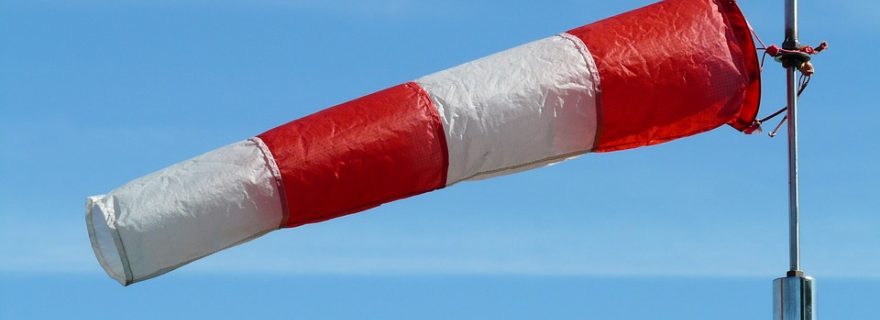What Security Studies can tell us about a storm
Even a 'simple' storm can provoke many security practices and routines on different levels of society.
On 18 January, one of the fiercest storms in almost 50 years, with wind speeds reaching up to 138 km per hour, crossed the Netherlands. As the storm raged over the country, the winds literally swept several pedestrians off their feet in Den Bosch, multiple lorries toppled on highways, a stack of sea containers fell over in Rotterdam harbor, solar panels were ripped off roofs – and a few houses even lost their roofs entirely – and, sadly enough, two people lost their lives due to falling tree branches. While the effects of the storm are nowhere near comparable to the degree of destruction hurricane Irma had on the Caribbean island of Sint Maarten in September 2017, it did, although briefly, affect public life in the Netherlands. We might be inclined to think a storm is just that, a natural phenomenon that happens every once in a while, with generally limited, but manageable consequences. A mundane event that briefly excites us before resuming normal life again. And we certainly don’t tend to think of it as a topic for Security Studies. But Security Studies actually has quite a lot to say about it as the storm provoked many security practices and routines on different levels.
Let’s begin with how the storm came to our attention. The Dutch weather services issued a weather warning – a Code Orange (‘Be prepared’) – on the day before, which was raised to Code Red (‘Take action’) on the day of the storm. In other words, the storm was no longer innocent, but turned into a security issue (securitized) as harm, both on a societal and individual level, was expected. The weather services did not make this decision by reading tealeaves, as their website makes clear. On the contrary, in their efforts to protect citizens from harm, they engaged in some serious risk assessment by calculating probabilities, making estimates about the geographical scope of the storm, and conducting an ‘impact analysis’ before finally deciding on a Code Red. But the decision to engage in risky behavior was also made by each and every citizen. Or did they? And can they even? With a storm raging: do we know what to protect against, and what the probabilities are of being harmed? These are familiar questions, and not altogether different from counter-terrorism.
Inevitably, the storm had all kinds of consequences. Some were familiar, and not unlike previous storms: trees fell down and lorries toppled. Initially the emergency services responded by asking people to report any damages, but as this produced such a flood in reporting, they quickly became overburdened and asked only to call in case of life-threatening incidents. Some consequences were more unexpected and required crisis management of a different kind. Glass paneling on the train stations of The Hague and Almere were damaged, kicking in another security routine: the stations were evacuated and closed to the public for a while. The storm even prompted some to reflect on what they can learn from these disruptive events. Truck drivers now want to be informed upfront by the Water Management Agency (Rijkswaterstaat) about dangerous roads in case of severe wind gusts to prevent lorries from being blown over, which happed at least 66 times during the storm.
The decision by the Dutch Railways to stop all train traffic affected many people on their way to work and school. Travelers were left stranded at train stations mid-way into their journey. All the disruptions, delays, accidents and other incidents the storm had concerning the mobility of citizens provides an interesting insight into the complexity of modern societies. We are so defined by the security and certainty of all kinds of mobilities that we only become aware of them when they break down. And for the stranded or affected travelers this challenges the ability to bounce back from such an unexpected event and deal with the consequences. Does such resilience come natural to people or do they need active encouragement by the authorities? Some people responded to their predicament by taking refuge in cafes. Modern day connectivity brought about by the internet allowed them to study or work at a distance. Meanwhile, by ordering a cup of coffee, these stranded travelers were able to ontologically secure themselves by having their frustrations replaced by a good shot of caffeine or share them collectively by posting photos and videos on social media. The hashtags #storm and #stormpoolen quickly became trending topics on Twitter, reflecting that people also shared offline by offering a ride to other people stranded mid-way.
After the storm had passed, insurance companies quickly produced the first estimates of the damage: 90 million euros. These companies will surely count their financial losses when having to pay out to those with the right insurance. But, of course, the storm brings these firms financial gains as well: they are eagerly awaiting new clients taking out an insurance policy against a future storm, thereby ensuring the financial security of both these firms and themselves. Even neoliberal economies stand to profit from the consequences produced by 138 km per hour wind speeds.
Security is anything but a straightforward thing. Its understanding requires a careful disentangling of the various routines, logics and practices that occur in a specific context, as even the ‘simple’ example of the storm showed. After all, it’s easy to talk at cross purposes about security since everyone has their own experiences and associations with it, irrespective of whether you’re a counter-terrorism analyst, a refugee seeking asylum or a student about to graduate.
Want to learn more about disentangling security challenges? See: BASS, CSM, MOOC: Security & Safety Challenges in a Globalized World, and MOOC: Risk in Modern Society.


